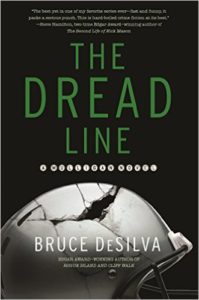 My friend Bruce DeSilva’s The Dread Line, the fifth book in his Edgar award-winning Liam Mulligan series, is coming out in hardcover and digital editions next month and is available for pre-order now. I asked Bruce to share with you the creative struggle he went through writing his new novel.
My friend Bruce DeSilva’s The Dread Line, the fifth book in his Edgar award-winning Liam Mulligan series, is coming out in hardcover and digital editions next month and is available for pre-order now. I asked Bruce to share with you the creative struggle he went through writing his new novel.
An unanticipated disaster struck as I was writing the fourth novel in my series featuring investigative reporter Liam Mulligan: The failing Providence, R.I. newspaper he had been working for abruptly fired him, creating a crisis for both of us.
It was a crisis for Mulligan because he considered journalism his calling, like the priesthood but without the sex. He’d always said that he could never be good at anything else—that if he couldn’t be a reporter, he’d end up selling pencils out of a tin cup.
It was a crisis for me because I owed my publisher another Mulligan yarn.
What was Mulligan going to do now? How would he make a living? And more importantly, how could he continue his life’s work of exposing greed and corruption? It was as if Joe Friday had been stripped of his badge, as if Superman had lost his cape, as if Robert B. Parker’s Spenser couldn’t be a private investigator anymore.
As I sat down to write, the first thing Mulligan and I had to do was invent a new life for him.
I’d never planned on Mulligan getting fired. Fact is, I don’t plan anything when I write. I don’t outline. I never think very far ahead. I just set my characters in motion to see what they will do. But looking back on it now, I can see that Mulligan’s firing was inevitable.
When I first made him a newspaper journalist in my debut novel, Rogue Island, I didn’t know that the book would be the first in a series, so I gave no thought to the possibility that I was writing myself into a corner. I made him an investigative reporter in Providence for three reasons.
- I’d been one myself, and they say you should write what you know.
- Reporters can’t get search warrants or drag people in for questioning, which sometimes makes their jobs more challenging than police work. But they also have an advantage because a lot of people who talk to reporters would never spill anything to the cops.
- But the main reason is that I wanted my novel not only to be suspenseful and entertaining but also to address a serious social issue.
American newspapers are circling the drain. Many already have gone belly up, and economic changes triggered by the internet have forced virtually all of them to slash their news staffs. This is a slow-motion disaster for the American democracy, because there is nothing on the horizon to replace newspapers as honest and comprehensive brokers of news and information.
As someone who spent forty years in the news business, I’ve always been annoyed that journalists are usually portrayed as vultures in the popular culture. The truth is that most of them are hard-working, low-paid professionals dedicated to digging out the truth in a world full of powerful people who lie as often as the rest of us breathe.
It was my hope that as readers followed the skill and relentlessness with which Mulligan worked, they would gain a greater appreciation for what is being lost as newspapers fade away. I made that first novel both a compelling yarn and a lyrical epitaph for the business that Mulligan and I both love.
But as the first novel led to a second, and then several more, the financial health of Mulligan’s employer, the fictional Providence Dispatch, became increasingly desperate. Circulation shrunk, advertising dried up, and hordes of Mulligan’s newsroom colleagues got bought out or laid off.
Fiction followed fact as the once-great Providence Journal, on which The Dispatch was loosely based, also spiraled downward. The newspaper had 340 newsroom employees when I worked there in the early 1980s. It has only 37 reporters and columnists now, and another buyout has just been announced by the chain that bought it a few years back.
As I was completing my fourth novel, A Scourge of Vipers, it became evident that Mulligan’s newspaper career, too, was coming to an end. The Dispatch had been sold off to a predatory conglomerate that had no interest in investigative stories and saw news as something to fill the spaces between the ads. Forced to spend most of his working hours on the routine tasks of putting out a daily newspaper, Mulligan ended up doing most of his investigative reporting on his own time. And his increasingly heated squabbles with his editors were making life untenable for both of them.
By the time that novel ended, Mulligan had been fired in spectacular fashion, accused of a journalism ethics violation that he had not committed. So as I began The Dread Line, the new novel in the series, Mulligan and I sat down together and looked back over his life, considering whether it offered him any hope for the future. There, we discovered a handful of possibilities.
Edward Mason, his young colleague at the paper, was leaving to start a local news website and invited Mulligan to join him. But the new business wasn’t making any money yet, so Mason could only offer starvation wages. Mulligan’s pal Bruce McCracken ran a private detective agency, so perhaps Mulligan could do some work for him. And Mulligan’s mobbed-up friend Dominic Zerilli was retiring to Florida and needed somebody to run his bookmaking business.
What should Mulligan do? Why not all three?
The opening of The Dread Line finds him no longer living in his squalid apartment in a run-down Providence triple-decker. Instead, he’s keeping house in a five-room, water-front cottage on Conanicut Island at the entrance to Narragansett Bay. He’s getting some part-time work from McCracken, although it rarely pays enough to cover his bills. He’s picking up beer and cigar money freelancing for the news website. And he’s running the bookmaking business with help from his thuggish pal, a former strip-club bouncer named Joseph DeLucca.
For the first time in his life, Mulligan has a little money in his pocket at the end of the month. After twenty years as a newspaper reporter, he says it feels strange to be living above the poverty line—and even stranger to be a lawbreaker. But as Mulligan and I see it, he’s not breaking any important ones.
And of course, he still manages to find trouble when it isn’t finding him.
He’s feuding with a feral tomcat that keeps leaving its kills on his porch. He’s obsessed with a baffling jewelry heist. And he’s enraged that someone on the island is torturing animals. All of this keeps distracting him from a big case that needs his attention.
The New England Patriots, still shaken by a series of murder charges against one of their star players (true story) have hired Mulligan and McCracken (not a true story) to investigate the background of a college star they are thinking of drafting. The player appears to be a choirboy, so at first, the job seems routine. But as soon as they start asking questions, they get push-back.
The player has something to hide, and someone is willing to kill to make sure it remains secret.
Mulligan may not be an investigative reporter anymore, but he and I are still in the crime-busting business.
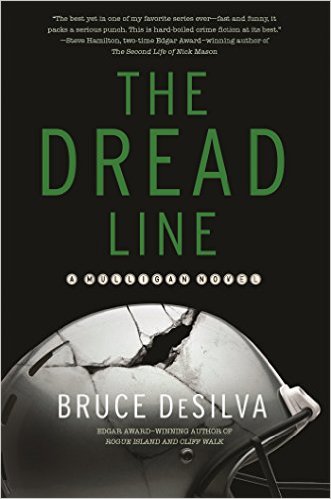

 The event organizers had a flair for the dramatic—the conference opened with a rescue simulation involving a gruesome car crash. Cops, fire, EMTs, and even a helicopter showed up to handle the call. Later, organizers staged a “live shooter” simulation with injuries in a crowded lecture hall. Once again, they went for full dramatic effect. Not only was it entertaining, but it was an excellent teaching/learning experience for everyone… participants and audience alike.
The event organizers had a flair for the dramatic—the conference opened with a rescue simulation involving a gruesome car crash. Cops, fire, EMTs, and even a helicopter showed up to handle the call. Later, organizers staged a “live shooter” simulation with injuries in a crowded lecture hall. Once again, they went for full dramatic effect. Not only was it entertaining, but it was an excellent teaching/learning experience for everyone… participants and audience alike. We also got to examine up close squad cars, SWAT vehicles, urban assault vehicles, mobile command vehicles and all of the equipment in the vehicles and that the officers carry.
We also got to examine up close squad cars, SWAT vehicles, urban assault vehicles, mobile command vehicles and all of the equipment in the vehicles and that the officers carry.

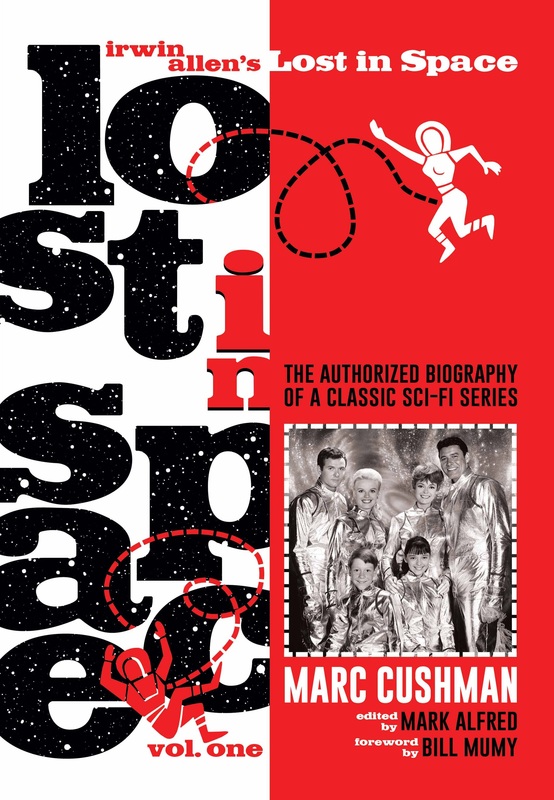
 I’m a sucker for TV books, even those about shows I didn’t watch or don’t particularly like…because, often, I can learn something new about the development, writing and production of TV series that I didn’t know before despite my own experience in the biz. Here are some short reviews of three recent releases.
I’m a sucker for TV books, even those about shows I didn’t watch or don’t particularly like…because, often, I can learn something new about the development, writing and production of TV series that I didn’t know before despite my own experience in the biz. Here are some short reviews of three recent releases.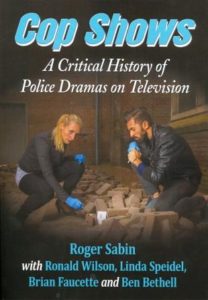

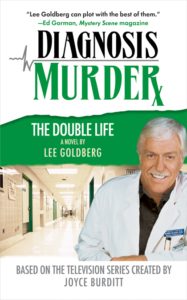 I’m heading off next week to the
I’m heading off next week to the 
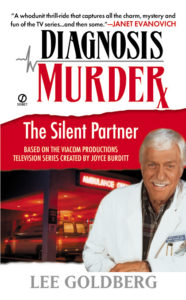 In my experience, the best “ah-ha!” clues come from character, not from mere forensics – for instance, I discover Aunt Mildred is the murderer because she’s such a clean freak, she couldn’t resist doing the dishes after killing her nephew.
In my experience, the best “ah-ha!” clues come from character, not from mere forensics – for instance, I discover Aunt Mildred is the murderer because she’s such a clean freak, she couldn’t resist doing the dishes after killing her nephew.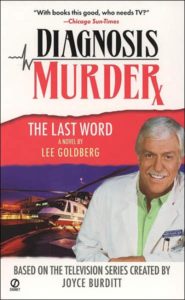 For one thing, there’s the budget and the shooting schedule. Whatever story you come up with has be shot in X many days for X amount of dollars. In the case of Diagnosis Murder, a show I wrote and produced for several years, it was seven days and $1.2 million dollars. In TV terms, it was a cheap show shot very fast.
For one thing, there’s the budget and the shooting schedule. Whatever story you come up with has be shot in X many days for X amount of dollars. In the case of Diagnosis Murder, a show I wrote and produced for several years, it was seven days and $1.2 million dollars. In TV terms, it was a cheap show shot very fast.